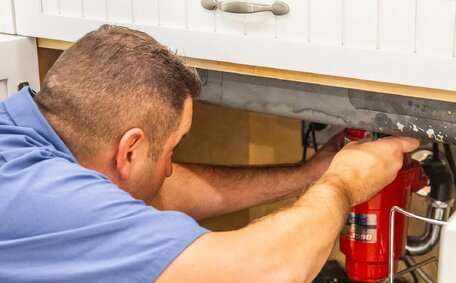The emergence of sustainable gas solutions marks a significant step towards a low-carbon future, offering cleaner alternatives during the energy transition. The oil and gas industry, once heavily reliant on fossil fuels, has now become a key contributor to the rise in greenhouse gas emissions and global warming. Innovative renewable gases and technologies now provide a pathway to transform our energy mix, maintaining both accessibility and affordability.
In the interim, natural gas, with concerted efforts to curb methane leaks, may act as a transitional fuel, but sustainable alternatives are crucial for lasting emissions cuts. Derived from sources such as agricultural waste or water, renewable gases like biomethane and green hydrogen are compatible with our existing gas network, thus obviating the need for new infrastructure.
This article explores how renewable gases support the move to low-emission alternatives and delves into advancements in gas efficiency, carbon capture, and strategies to reduce methane leaks. These innovations, particularly the drive for 100% renewable gas, are vital in our pursuit of net zero carbon emissions while ensuring a reliable and safe energy supply.
The Role of Natural Gas in a Sustainable Future
With renewable energy sources emerging, natural gas is expected to play a critical transitional role as a bridge away from fossil fuels which dominated the past, steering us towards a sustainable energy future. Burning natural gas for electricity releases less carbon dioxide than coal oil and other fossil fuels, positioning it as a key transitional fuel with lower environmental impact. As such, natural gas emerged as the cleaner choice among fossil fuels while renewable energy capacities grow.
Australia has made notable investments in natural gas with the support of oil and gas companies, positioning it as a vital export commodity. Within Australia’s move toward net zero carbon, natural gas, making up nearly half of our 25% primary energy usage, still plays a significant role. It also plays a vital role in fertiliser production through its conversion to hydrogen.
At the heart of sustainability concerns lies the emission of potent greenhouse gases such as methane in the gas supply chain, something we seek to mitigate as we transition towards a greener future. These negate any climate benefits, so reducing emissions through leak detection and minimisation technologies is critical. Moreover, replacing coal with gas in the power sector evades air pollution, a shift we need to embrace to secure marked public health improvements.
While natural gas remains important for the forthcoming decade, its enduring role hinges on the rate of our transition to more sustainable energy. Emerging renewable gas projects like renewable gases, carbon capture and storage, and energy efficiency improvements will dictate the extent to which gas contributes to a net zero future.
Understanding Renewable and Carbon-Neutral Gases
Biomethane and green hydrogen represent the renewable gas vision, providing carbon-neutral alternatives to conventional fossil fuels and advancing our sustainability goals. hydrogen biomethane can process methane emissions from landfills or agricultural waste and convert them into renewable gas that is ready for use. Green hydrogen is generated through electrolysis, tapping into energy with the assistance of solar wind technology, underscoring its eco-friendly potential.
Integrating renewable gases into our current network enables the replacement of natural gas without necessitating new infrastructure. Most gas appliances can now function with a blend containing up to 10% hydrogen, marking progress towards complete hydrogen compatibility in line with our 2040 stretch targets.
Utilising renewable gas — a source we can trust — reduces dependence on traditional fossil fuels and their associated greenhouse gas emissions. Escalating renewable hydrogen production to 5% by 2030 could significantly reduce annual carbon emissions. Innovations ensure that we can use our gas for heating, power, and transport sectors, offering an economical path to decarbonisation.
Technological Innovations in Gas Utilization
Several key technological innovations are driving more efficient and sustainable gas utilisation while reducing emissions.
Modern gas turbine power plants can now reach efficiency levels above 60%, a stark contrast to the 30-40% of sources energy efficiency observed a decade ago. This heightened efficiency contributes to maximising benefits per unit of gas used on the path to 2030. Smart gas metering, by capturing detailed energy usage data, empowers households and businesses to make informed energy efficiency choices.
Technologies such as micro combined heat and power (CHP) systems enhance energy use in appliances by capturing and repurposing waste heat that was traditionally lost. Highly efficient gas condensing boilers also minimise losses.
Together, these advancements are ensuring that gas remains an integral asset at the same time as our journey towards net zero emissions progresses. Adoption incentives and appliance upgrade schemes will pave the path for our customers, ensuring our customers wholeheartedly embrace sustainable gas solutions, reap economic advantages, and foster smaller carbon footprints.
Policies and International Perspectives on Gas
Worldwide mandates, inclusive of those from the renewable energy agency, are championing the adoption of sustainable gas solutions which dovetail with aspirations for net zero emissions. Pursuing a target no later than 2030, under the Paris Agreement, Australia is steadfast in its stretch target of reducing greenhouse gas emissions by no later than 2030.
Many states and territories have committed to ambitious renewable energy and emissions reductions goals, aligning with our national all-or-nothing stretch targets. New South Wales aims to meet the target being net zero emissions by the midpoint of the century. Transitioning Sydney’s gas networks 100 renewable will be key for the state to achieve its sustainability agenda.
Internationally, the EU’s climate neutrality goal under the European Green Deal is accelerating renewable gas deployment. It sets binding emissions targets and promotes clean technologies. Australia can draw insights from international energy policies to decarbonise gas usage through renewable hydrogen and biomethane blending.
For ventures like Mitchell Park Plumbing, policy shifts are a strong endorsement for embracing renewable hydrogen biomethane efficiency upgrades and sustainable technology adoption. Appliance conversions to run on renewable gas will future-proof operations while reducing environmental impact.
Fluorinated Gases (F-gases) and Climate Goals
Fluorinated gases, known as F-gases, are human-made gases used in heating, ventilation, air conditioning and refrigeration systems due to their heat transfer capabilities and energy efficiency properties.
Common F-gas types include hydrofluorocarbons (HFCs), perfluorocarbons (PFCs) and sulphur hexafluoride (SF6). Unfortunately, most F-gases have a high warming potential GWP, up to 23,500 times greater than carbon dioxide.
Regulating and reducing F-gas use is critical for achieving climate goals under the Paris Agreement, illustrating the various sectors, such as HVAC&R, accounting for 10% of Australia’s greenhouse gas emissions, we must address. The Kigali Amendment to phase down potent HFCs took effect in 2019.
Transitioning to alternative refrigerants with reduced environmental impact is a notable stride towards reaching our stretch target no later than the designated deadlines. Natural refrigerant options like carbon dioxide and hydrocarbons align with net zero emissions targets in the push towards renewable energy and sustainability.
Challenges and Opportunities in Sustainable Gas
The transition to sustainable gas faces several key challenges. Incorporating renewable hydrogen and biomethane into our energy systems necessitates significant modifications to existing gas distribution networks. Such changes necessitate significant financial investments in production, storage, data center operations and enhancing transport capabilities.
There are also technological obstacles to overcome, including developing cost-effective renewable gas production pathways and efficient compression systems. Appliance compatibility with new gas blends needs to be addressed too.
However, these challenges offer opportunities for job creation in the burgeoning renewable gas sector and a chance for Australia to lead in global energy innovation. The long-term economic benefits also outweigh short-term costs - sustainable gas supports energy reliability and affordability during the zero emissions transition and beyond.
With affirmative policies and collective stakeholders’ engagement, Australia can spearhead the movement in employing renewable gases, acting as substitutions for other fossil fuels that have formerly been central to the energy landscape. This allows the gas industry to reinvent itself while providing social, environmental and economic returns for the Penrith community.
Fostering Economic and Environmental Benefits
The switch to renewable gases such as hydrogen and biomethane promises significant economic and environmental perks for Penrith and the rest of Australia.
The development of a local renewable hydrogen industry holds the potential for creating numerous new jobs in production, storage and transport sectors. Furthermore, investing in infrastructure could boost advanced manufacturing opportunities.
Endeavours like hydrogen park south australia exemplify how, by moving away from the conventional fossil fuel industry, we ascertain gas can continue access within local energy spheres, ultimately enhancing self-reliance and tempering energy costs. Predictions indicate a 16% drop in household gas bills by 2050 as industries relying gas can continue to prosper under a high-hydrogen framework.
Adopting hydrogen park initiatives and biomethane, especially in South Australia, reduces significant greenhouse gas emissions from natural gas, supporting national climate objectives. Improved local air quality also yields public health benefits. Overall, sustainable gas aligns economic growth with environmental sustainability.
Conclusion: Gas as Part of a Diverse Energy Portfolio
In the shift towards a sustainable energy future, natural gas and renewables will maintain vital roles within a diversified energy system. Investments in solutions such as renewable hydrogen, biomethane, and methane leak reduction will ensure that gas infrastructure remains viable for decades and continues to deliver environmental advantages.
Contact Penrith Plumbing by providing your email address to discover more about the potential of sustainable gas. Upgrading appliances or installing efficient renewable gas systems future-proofs your home or business while reducing emissions.
As natural gas use declines and renewables ascend, we face the chance to redefine gas’s role in an emission-free energy landscape. Let’s work together to reap the economic, social and environmental rewards - fostering a sustainable world for future generations.






